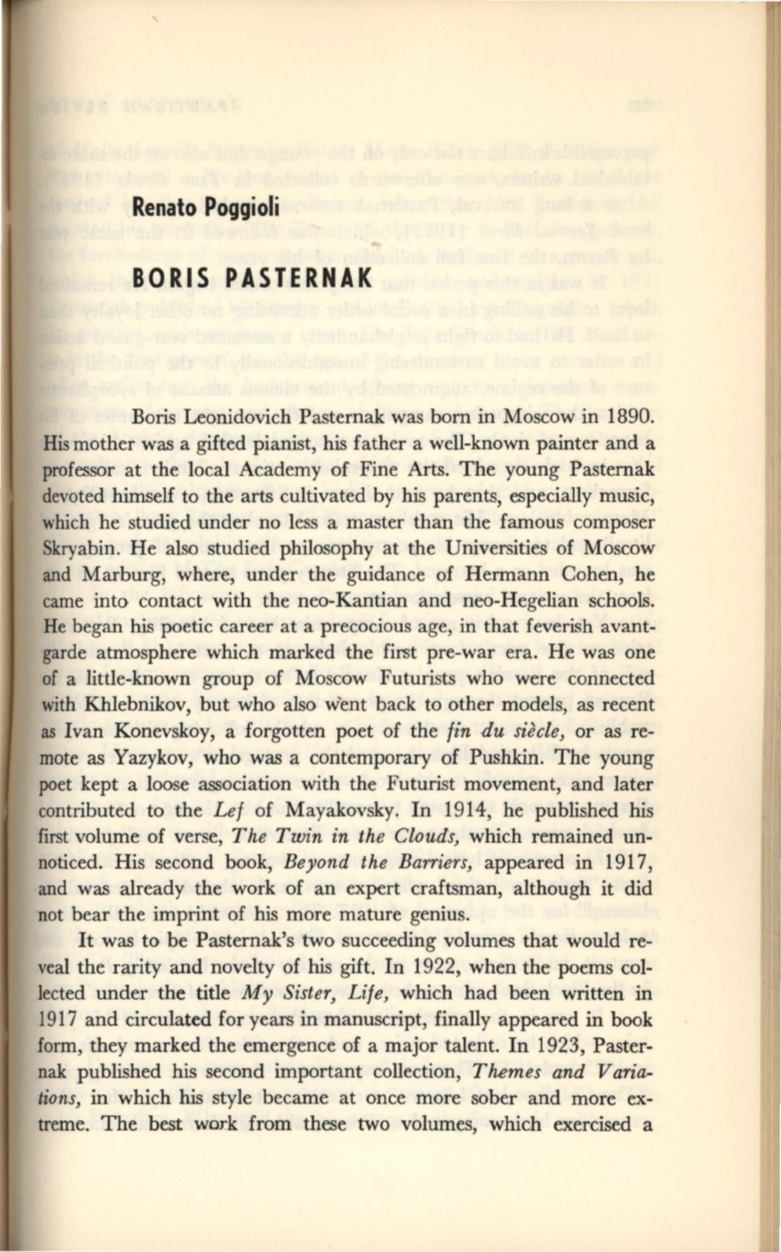
Renato Poggioli
BORIS PASTERNAK
Boris Leonidovich Pasternak was born in Moscow in 1890.
His mother was a gifted pianist, his father a well-known painter .and a
professor at the local Academy of Fine Arts. The young Pasternak
devoted himself to the arts cultivated by his parents, especially music,
which he studied under no less a master than the famous composer
Skryabin. He also studied philosophy at the Universities of Moscow
and Marburg, where, under the guidance of Hermann Cohen, he
came into contact with the neo-Kantian and neo-Hegelian schools.
He began his poetic career at a precocious age, in that feverish avant–
garde atmosphere which marked the first pre-war era. He was one
of a little-known group of Moscow Futurists who were connected
with Khlebnikov, but who also went back to other models, as recent
as Ivan Konevskoy, a forgotten poet of the
fin du siecie,
or as re–
mote as Yazykov, who was a contemporary of Pushkin. The young
poet kept a loose association with the Futurist movement, and later
contributed to the
Lef
of Mayakovsky. In 1914, he published his
first volume of verse,
The Twin in the Clouds,
which remained un–
noticed. His second book,
Beyond the Barriers,
appeared in 1917,
and was already the work of an expert craftsman, although it did
not bear the imprint of
his
more mature genius.
It was to be Pasternak's two succeeding volumes that would re–
veal the rarity and novelty of his gift. In 1922, when the poems col–
lected under the title
My Sister, Life,
which had been written in
1917 and circulated for years in manuscript, finally appeared in book
form, they marked the emergence of a major talent. In 1923, Paster–
nak published his second important collection,
Themes and Varia–
tions'
in which
his
style became at once more sober and more ex–
treme. The best work from these two volumes, which exercised a


